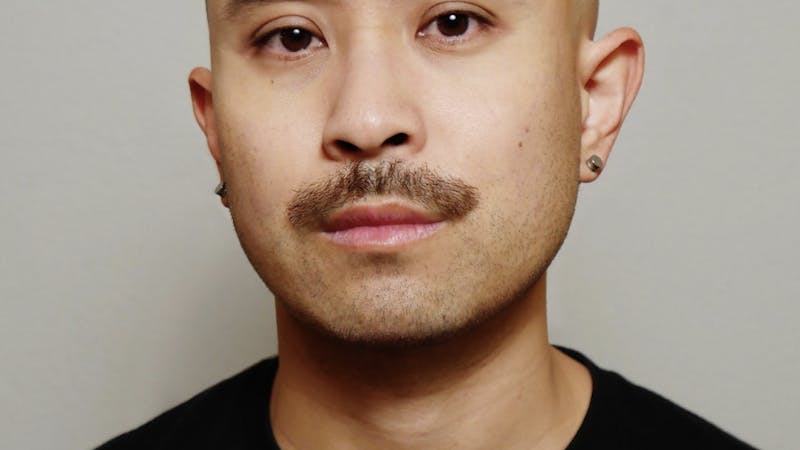Rice responds to Supreme Court decision on affirmative action

Jennifer Liu / Thresher
The Supreme Court rejected affirmative action at colleges and universities across the nation in a watershed decision on June 29. Following the decision, President Reggie DesRoches and Provost Amy Dittmar wrote in an email to the student body that they were “disappointed” by the ruling and that their commitment to diversity does not shift, echoing a statement from March.
Dittmar reaffirmed that Rice will adapt its strategies — within the confines of the law — to ensure a diverse and inclusive learning environment.
“It is important that our students and prospective students can learn from professors and work in labs with research scientists who look like them,” Dittmar wrote in an email to the Thresher. “In recent years, we’ve hired our most diverse faculty classes, for example, doubling the number of Black professors in the past five years and increasing our female hires.”
Vice President for Enrollment Yvonne Romero da Silva said that the Office of Admissions had about a year to anticipate the Court’s decision, and worked closely with legal counsel and university leadership to review the impact of the restrictions surrounding race in Rice admissions and initiatives.
While the Court limited the ability of institutions to consider an applicant’s race in and of itself as a factor in admissions decisions, universities may still consider an individual’s lived experiences, including those related to their race, experiences of racial discrimination, or the racial composition of their neighborhoods and schools. Romero da Silva said that the admissions team has always been trained to consider each student as an individual.
“Even though the Supreme Court ruling is not allowing us to track race in the [admissions] process, our team is already trained to look at those unique voices that students are bringing and to value it,” Romero da Silva said. “[They are trained to consider] the full lived experiences that might be underrepresented in the Rice community and to consider that in thinking about their achievements and what they’ve done and the voices that they can bring to campus.”
Araceli Lopez, the executive director of Student Success Initiatives, said that she has seen an increase in enrollment of underrepresented students over time and hopes that students continue to feel welcomed and included at Rice.
Dittmar also wrote that even with a diverse student body, faculty and staff, the university still has a responsibility to ensure that the students it admits feel like they belong and have equal opportunities for success.
“We’ve been very intentional about recruiting more underrepresented students and minorities, whether that’s through socioeconomic status, race, ethnicity, geographical status or international students,” Lopez said. “I also think that our Rice Investment, coupled with our intentional efforts of who we’re recruiting and trying to get into Rice, provide an accessible education to more students.”
Rice is going into its second year of being a loan-free institution, and hopes to be affordable through programs such as the Rice Investment, which awards full-tuition, fees and room and board to students with a household income less than $75,000 and full-tuition to students with a household income between $75,000 and $140,000.
In 1996, the 5th U.S. Circuit Court of Appeals’ decision in Hopwood v. Texas ruled that universities under its jurisdiction — including Rice — could not consider race in admissions. However, in 2003, the Supreme Court abrogated Hopwood in Grutter v. Bollinger, meaning that universities in the Fifth Circuit’s jurisdiction could again use race as a factor in admissions. During this nine-year period, Rice had already begun to consider unique perspectives and lived experiences more heavily, according to Romero da Silva.
“In nearly every state or region that has prohibited the use of race in admission, there has been a decrease in the enrollment of underrepresented students at institutions in those states, including Rice University during the Hopwood years,” Dittmar wrote. “I came from an institution that was unable to use race in admissions so I saw firsthand that the change in these laws decreased the percentage of students of color at institutions.”
In response to the recent Court decision, Romero da Silva said the Office of Admissions has updated Rice’s supplemental application questions. For the third prompt, applicants now have the choice between two questions to demonstrate how their lived experiences will help foster community on campus.
One asks about unique perspectives that students are looking forward to sharing with their fellow students and the other asks about how students’ backgrounds and experiences have inspired them to become agents of change at Rice.
“We want to provide the opportunity for students to share their stories, but we also don’t want them to feel compelled to share something that they don’t feel comfortable with,” Romero da Silva said. “I’m really grateful for the positions that Rice has taken, in that we open the door for students to talk about that component or aspect of their life if they choose to, but they can also choose to highlight other aspects of the perspectives that they’ll bring to campus if they feel that that’s more relevant or more important to them.”
Arielle Noah, a diversity facilitator and senior at Will Rice College, wished that Rice would do more local outreach and publicize its diversity efforts.
“One thing that always bothered me, though, is that most Rice students are from Texas, or from the Houston area, which has a really high Black population [and] Hispanic population. And yet, those are still underrepresented at Rice,” Noah said. “I feel like if people knew that we are making these programs so that we can address these issues, then it would be more helpful so that we don’t feel like … Rice is just running away.”
Dittmar wrote that Rice also has a variety of programs to bring underrepresented groups to campus and learn about higher education opportunities. She named the Civic Humanist Program under the School of Humanities, the National Urban League’s Youth Leadership Summit in collaboration with Texas Southern University, Tapia STEM camps and the Creative Writing Camp through the Glasscock School of Continuing Studies.
These programs allow high school students to explore opportunities for learning, leadership and personal growth and create interest among first-generation and minority students about Rice, according to Dittmar.
“[For Rice students], Student Success Initiatives such as the Rice Emerging Scholars Program, the [Responsibility, Inclusion and Student Empowerment] seminar, the Owl Access program and similar initiatives help foster community among first-generation, low-income and students from other underrepresented communities,” Dittmar wrote.
Student Success Initiatives also works closely with Questbridge Scholars and Houston Independent School District EMERGE, a Houston-based program that supports first-generation and low-income students in attending and graduating from universities. The Office of Admissions is also unveiling a new program connecting community-based organizations working with students from underrepresented backgrounds with Rice, said Romero da Silva. This program invites leaders of these organizations to visit Rice and learn about the different opportunities that Rice has to offer.
“Counselors and educators and [community-based organization] directors, especially for students of color and low-income students, have a larger impact in the decision-making of the students about where they’re going to go,” Romero da Silva said. “The more we can do to invest in helping those individuals who work so hard with these students and their parents [to] learn about what Rice has to offer, we hope that we’ll have a better chance … [for underrepresented students to] think about Rice as a consideration.”
Romero da Silva also said she hopes that through community outreach, prospective students will come to learn about the value of Rice and the diverse learning body it strives to have.
“Part of the beauty of the college experience is being exposed to people who are different than you,” Dittmar wrote. “Their family, food, faith, upbringing or habits may be different than yours. Get curious and don’t be afraid to ask questions – in a respectful manner, of course – to better understand each other and foster a deeper sense of community with your colleagues or your classmates.”
More from The Rice Thresher

Andrew Thomas Huang puts visuals and identity to song
Houston is welcoming the Grammy-nominated figure behind the music videos of Björk and FKA twigs on June 27.

Live it up this summer with these Houston shows
Staying in Houston this summer and wondering how to make the most of your time? Fortunately, you're in luck, there's no shortage of amazing shows and performances happening around the city. From live music to ballet and everything in between, here are some events coming up this month and next!

Rice to support Harvard in lawsuit against research funding freeze
Rice, alongside 17 other research universities, filed an amicus curiae brief in support of Harvard University’s lawsuit against the Trump administration over more than $2 billion in frozen research grants.

Please note All comments are eligible for publication by The Rice Thresher.